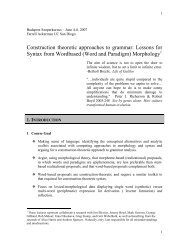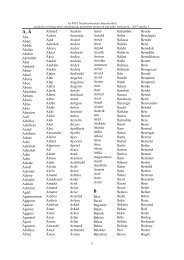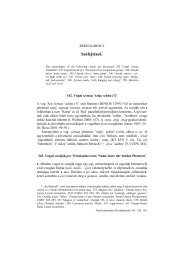Nyelvtudományi közlemények 91. kötet (1990)
Nyelvtudományi közlemények 91. kötet (1990)
Nyelvtudományi közlemények 91. kötet (1990)
Sie wollen auch ein ePaper? Erhöhen Sie die Reichweite Ihrer Titel.
YUMPU macht aus Druck-PDFs automatisch weboptimierte ePaper, die Google liebt.
The Finnish construction holme poikaa<br />
and its background<br />
In his article Typology and Universals on a Eurasian East-West Continuum<br />
(1980), Robert Austerlitz states: "There is a typological continuum<br />
which stretches from Fenno-Scandia (let us think of Lapp) in the West to<br />
Japanese in the East" (235). In another article he speaks of the gigantic<br />
North-Eurasian cultural belt where such features as parallellism and alliteration<br />
play very prominent roles in folk poetry (Austerlitz 1984. 18).<br />
At the western border of this typological contunuum we find languages<br />
of quite another type, belonging to the Indo-European family, viz. Germanic,<br />
Baltic and Slavic languages. In the course of time, these languages and the<br />
Fenno-Ugric languages have mutually influenced each other. It can often be<br />
difficult to decide in what direction the influences have gone.<br />
In a recent article, Terje Mathiassen (1984. 123ff) proposes that we<br />
should speak of a "Sprachbund" between the Slavic, Baltic and Baltic-Finnic<br />
languages. He gives a good bibliography covering the earlier discussion on<br />
the subject (147ff).*<br />
From the point of view of the Baltic-Finnic languages, however, it is<br />
impossible to leave out the Germanic languages if we want to speak of<br />
a "Sprachbund" on the coast of the Baltic sea. As can be seen from the<br />
great number of loan-words, the Baltic and the Germanic languages have<br />
for a very long period exerted considerable influence on the Baltic-Finnic<br />
languages, and it is often difficult to see if a caique is due to Baltic or<br />
Germanic influence (see e.g. T. Sköld 1980. 250f). We must then, of course,<br />
compare with earlier versions of these Indo-European languages, when they<br />
stood much closer to each other than they do today, and we must often take<br />
into account constructions that have now disappeared.<br />
I would like, however, to add a reference that — for some reason or other — does not<br />
seem to occur in recent works on the subject, namely H. Sköld 1931. 74-79.<br />
Nyelvtudományi Közlemények <strong>91.</strong> <strong>1990</strong>.




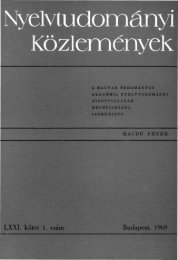

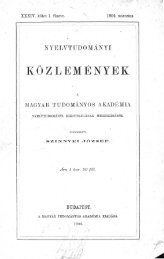
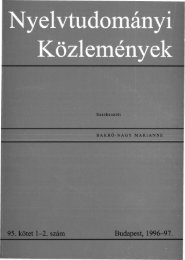
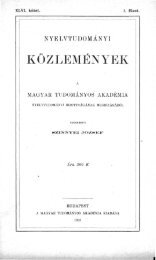
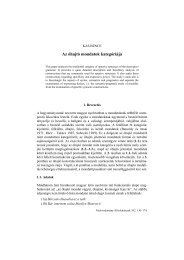
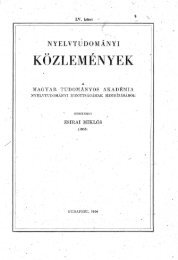
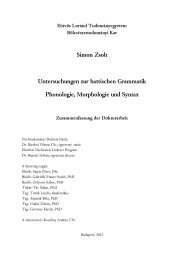
![Gósy Mária: A [p, t, k] mássalhangzók zöngekezdési ideje Bevezetés ...](https://img.yumpu.com/15682849/1/190x245/gosy-maria-a-p-t-k-massalhangzok-zongekezdesi-ideje-bevezetes-.jpg?quality=85)

